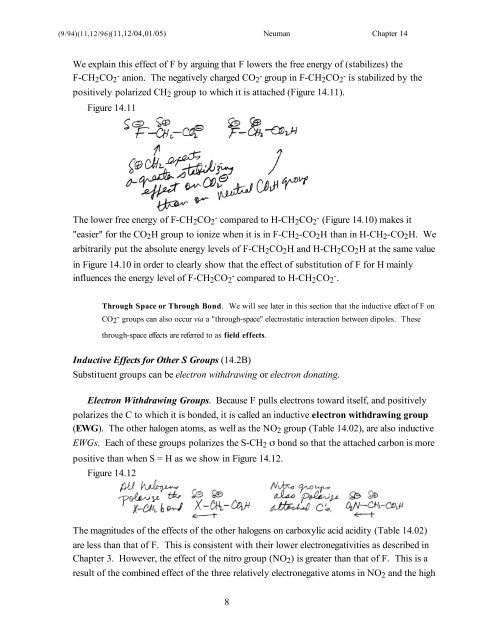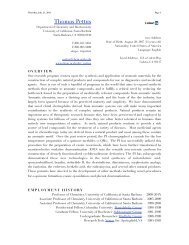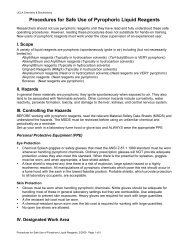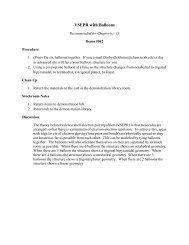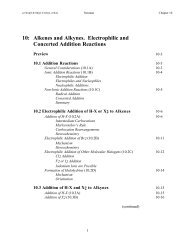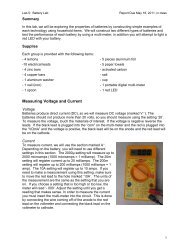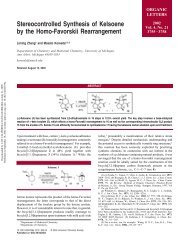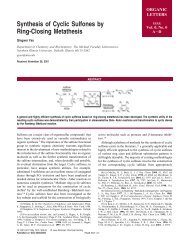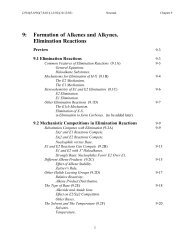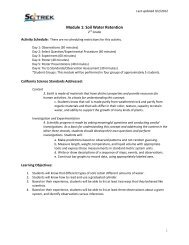14: Substituent Effects
14: Substituent Effects
14: Substituent Effects
You also want an ePaper? Increase the reach of your titles
YUMPU automatically turns print PDFs into web optimized ePapers that Google loves.
(9/94)(11,12/96)(11,12/04,01/05) Neuman Chapter <strong>14</strong><br />
We explain this effect of F by arguing that F lowers the free energy of (stabilizes) the<br />
F-CH2CO2 - anion. The negatively charged CO2 - group in F-CH2CO2 - is stabilized by the<br />
positively polarized CH2 group to which it is attached (Figure <strong>14</strong>.11).<br />
Figure <strong>14</strong>.11<br />
The lower free energy of F-CH2CO2 - compared to H-CH2CO2 - (Figure <strong>14</strong>.10) makes it<br />
"easier" for the CO2H group to ionize when it is in F-CH2-CO2H than in H-CH2-CO2H. We<br />
arbitrarily put the absolute energy levels of F-CH2CO2H and H-CH2CO2H at the same value<br />
in Figure <strong>14</strong>.10 in order to clearly show that the effect of substitution of F for H mainly<br />
influences the energy level of F-CH2CO2 - compared to H-CH2CO2 - .<br />
Through Space or Through Bond. We will see later in this section that the inductive effect of F on<br />
CO2 - groups can also occur via a "through-space" electrostatic interaction between dipoles. These<br />
through-space effects are referred to as field effects.<br />
Inductive <strong>Effects</strong> for Other S Groups (<strong>14</strong>.2B)<br />
<strong>Substituent</strong> groups can be electron withdrawing or electron donating.<br />
Electron Withdrawing Groups. Because F pulls electrons toward itself, and positively<br />
polarizes the C to which it is bonded, it is called an inductive electron withdrawing group<br />
(EWG). The other halogen atoms, as well as the NO2 group (Table <strong>14</strong>.02), are also inductive<br />
EWGs. Each of these groups polarizes the S-CH2 σ bond so that the attached carbon is more<br />
positive than when S = H as we show in Figure <strong>14</strong>.12.<br />
Figure <strong>14</strong>.12<br />
The magnitudes of the effects of the other halogens on carboxylic acid acidity (Table <strong>14</strong>.02)<br />
are less than that of F. This is consistent with their lower electronegativities as described in<br />
Chapter 3. However, the effect of the nitro group (NO2) is greater than that of F. This is a<br />
result of the combined effect of the three relatively electronegative atoms in NO2 and the high<br />
8


